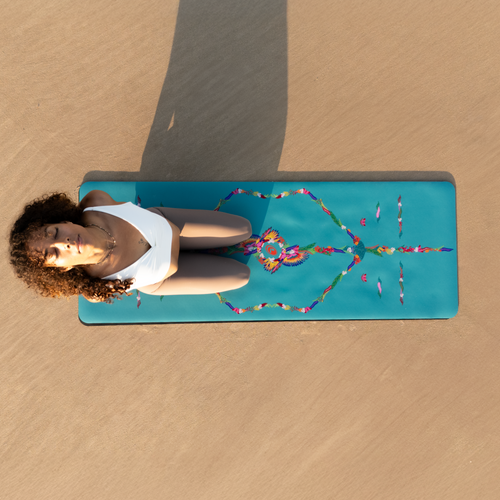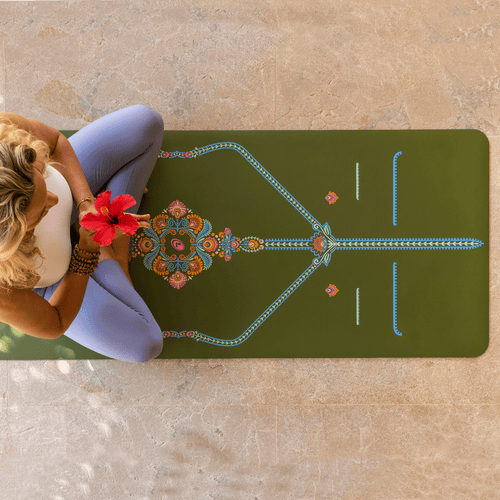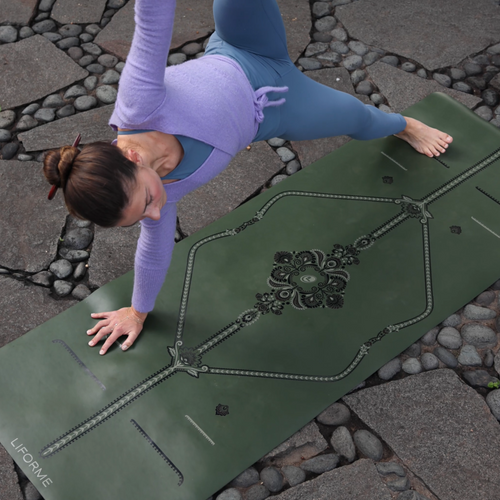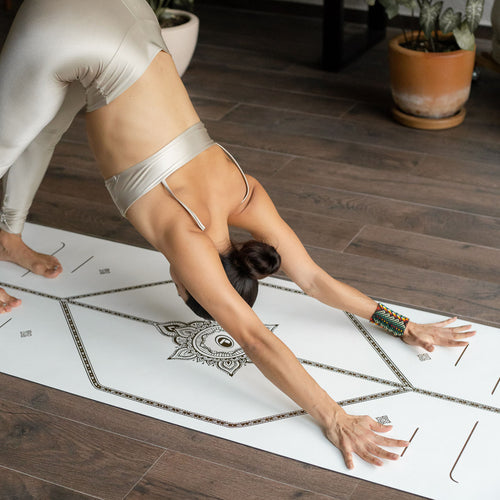Lots of people think about starting a yoga practice for ages before they actually step onto a mat for the first time. We’ve gathered the following tips for just those people, plus those who have tried yoga once or twice but didn’t keep it up.
Finding the Right Yoga Practice for You
- Choose your style of yoga
A big part of successfully starting a yoga practice is finding the style of yoga that really resonates with you so that you enjoy doing it and want to keep going. If you’ve tried yoga before and it hasn’t stuck, try a different style. Think about whether you prefer something fast-paced and sweaty or slower and more introspective, but bear in mind that some people who are getting their cardio elsewhere prefer to use their yoga time for slower movement. Use our Beginner’s Guide to Yoga Types for an overview.
- Choose a class or instructor
Like picking a style of yoga, finding the classes and teachers that click makes sticking to a yoga routine a pleasure. Be prepared for some trial and error here, but there are a few strategies to get you started. First, find a place to practice that is convenient to your home or work. Most yoga studios have teacher bios on their websites, so do a little research. If you have friends (coworkers, neighbours, relatives) who do yoga, ask them for recommendations. Most yogis are super happy for the opportunity to talk up their favourite teachers. Then you just have to try a few and see who you like.
- Considerations for physical conditions or injuries
If a traditional yoga class is not a good fit for you, there are other ways to get yoga into your life. Chair yoga classes are probably the most commonly available adaptive option. If private classes are an option, you will always get more individualised adaptations that way. Meditation is also a branch of yoga.
 Establishing a Regular Yoga Practice
Establishing a Regular Yoga Practice
- Schedule time for yoga
This is easily the top tip for becoming a regular yogi. Pick a time or a class and get it on your calendar at least a few days a week. Be realistic in your planning but fanatic in your execution. Yoga time isn’t a suggestion, it’s a requirement.
- Make yoga a part of your daily routine
Once you get going, it helps to make a little time for yoga every day. Most people find the morning to be the best opportunity to carve out 10 to 15 minutes of gentle movement, meditation, gratitude, or whatever practices help ground you at the start of your day.
- Set goals and intentions
Keep things simple in this department as you get started. Getting onto your mat regularly at your scheduled time and place is enough. Don’t worry about which poses you can do or what it all means. Just keep showing up.
 Essential Yoga Equipment and Clothing
Essential Yoga Equipment and Clothing
- Yoga mat
No surprises here, we think an excellent yoga mat is an invaluable tool for yogis for all levels and a Liforme yoga mat gets you started on the right foot (and the left foot). For beginners, the AlignForMe guide helps you make sense of all the alignment instructions you are receiving, and the incredible grip ensures that you won’t slip even if you get sweaty.
- Comfortable clothing
You undoubtedly already have some stretchy clothing that will work well for yoga. Up top, a more fitted tee or tank is better than a very loose one that will slide down every time you bend over (here’s looking at Downward Facing Dog). Choose shorts, leggings, or a looser pant. Layers make sense when it’s chilly. Once you’ve done a few classes, you may discover you have more specific preferences, and that’s a good time to go shopping.
- Optional equipment such as blocks, straps, and blankets
If you’re going to be practising primarily at home, it can be useful to have some auxiliary props. Straps and blankets can be easily improvised from things you have around the house, but a good stable yoga block comes in very handy. If you plan to take classes at a studio or gym, they will provide all these props. If you have sensitive knees, a Yoga Pad is a nice accessory.
 Modifications and Props
Modifications and Props
- Using modifications to suit your body's needs
The very first yoga lesson, before Mountain or any other pose, is that this is your practice for your body at this moment. That means doing the version of a pose that works best for you right now, without worrying about what anyone else is doing on the mat next door. For beginners, this is most often the most basic version of the pose. If they say bend your knees, bend your knees without hesitation or judgment. There’s plenty of time to straighten your legs later.
- Utilise props to support your practice
Props are intended to facilitate the building of better alignment habits to maximise yoga’s benefit and minimise the risk of injury. Among other uses, blocks raise the level of the floor so you can reach it with your hand, straps act as arm extenders, and blankets lift your hips above your knees so you can elongate your spine and sit with great comfort. Use props whenever they are offered or when they seem useful to you.
 Staying Motivated and Focused on Your Health Journey
Staying Motivated and Focused on Your Health Journey
- The importance of consistency
Yoga’s many wonderful benefits for your physical and mental health are achieved through consistent practice over time. Showing up on your mat on a regular schedule is the most important part of starting a yoga practice. You don’t have to be good at anything to begin doing yoga, you just have to be present.
- Setting achievable goals
When it comes to goals, don’t focus on any poses but rather on consistently doing your practice. You can’t control when you might be able to do a particular balance or inversion, but you can control how often you are making it onto your mat.
- Seeking support from a yoga community
If you show up to the same classes week after week, your teachers and fellow students quickly become your yoga community. This is one of the loveliest things about becoming a regular at the yoga studio. If you ever have a question or need a bit of encouragement, these are your people. Many home yogis find similar support systems through online yoga connections.
 Just Keep Going
Just Keep Going
You’ve probably noticed an overriding theme here: just keep going. Consistent practice over time is the key to unlock all of yoga’s gifts. If you need just a little bit more of a push to get you over the starting line, check out our Complete Guide to Getting Started with Yoga for lots more info and tips.




































